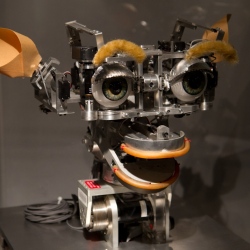
In 2006, a plot by terrorists to blow up as many as 10 passenger planes in mid-air using peroxide-based liquid explosives was foiled by British authorities.
That led to the infamous TSA “no liquids or gels” flight restriction. But it also led to creation of the National Explosives Engineering Sciences Security (NEXESS) Center at Sandia National Laboratories, Los Alamos National Laboratory, and Lawrence Livermore National Laboratory, funded by the Department of Homeland Security to assess threats from explosives and to evaluate countermeasures.
“We’ve been looking at various homemade explosives in detail ever since, both experimentally and using modeling and simulation,” said Lee Glascoe, who heads Lawrence Livermore National Laboratory (LLNL)’s participation in NEXESS. ”We need to see what a terrorist might use and how effective certain types of explosives might be in bringing down planes and other targets of interest.”
Which is where (LEXI Livermore Explosives iRobot), a new robot designed for handling explosives, comes in. LEXI is based on iRobot’s Packbot 510, from the folks who created the Roomba vacuum-cleaning robot.
How does a robot test explosives?
Answer: carefully. Here’s how:
1. First, a human layers two or three ingredients including a fuel and oxidizer in a plastic cylinder and inserts the container into an acoustic mixer.
2. The human (remotely) turns it on.
3. LEXI removes the resulting mix and transports it to the tank’s firing table — then (quietly) leaves.
4. BOOM!
